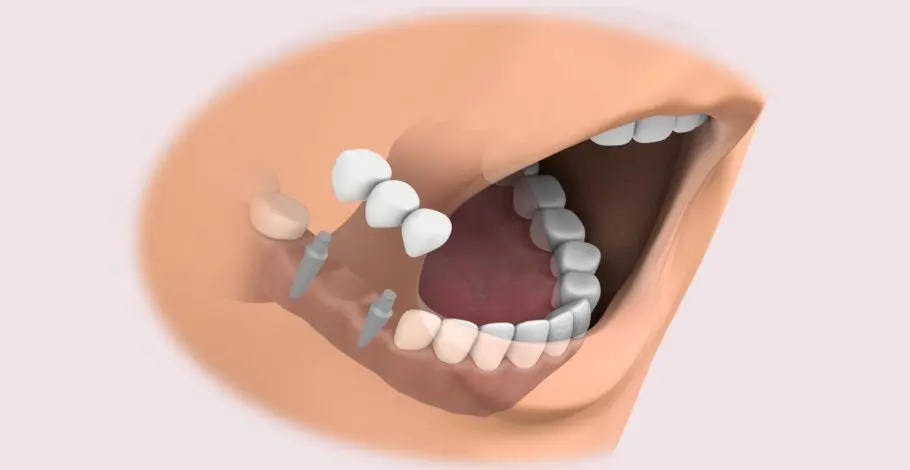Other Treatment Methods
- Dental anxiety / pain-free dental treatment
- Dental prosthesis
- Digital dentistry
- Gum treatment
- Orthodontics
- Pediatric dentist
- Prophylaxis / Professional Teeth Cleaning (PZR)
- Root canal treatment / Endodontics
- Sports dentistry
- Teeth grinding and CMD (Craniomandibular Dysfunction)
- Teeth whitening / Bleaching
- Veneers (dental shells)

Dental bridge
In the case of missing teeth, dental bridges can be used to close gaps. For this purpose, the adjacent teeth (the so-called abutment or pillar teeth) are ground down to be connected to the tooth-replacing part as a bridge. Alternatives considered include dental bridges that are either based solely on implants or on a combination of implants and dental pillars.
Advantages of a dental bridge
As a rule, the bridge allows for trouble-free chewing again, as the chewing surfaces are tailored by the dentist Dentist exactly to the patient's needs and chewing system. Additionally, the positive aesthetic impression of the dentition is ensured, and an ideally fitted bridge also positively affects speech function. The usually firmly seated dental prosthesis (exception: telescopic bridge) also eliminates handling problems (as can occur with a prosthesis) and features very long durability.
Disadvantages of a dental bridge
The disadvantage is that a lot of tooth substance must be sacrificed on the abutment teeth due to the necessary grinding down, and cleaning the spaces in between is more laborious.

Materials of a dental bridge
When choosing the most suitable material for a dental bridge, the placement of the dental prosthesis is an important criterion: Where the Teeth are clearly visible, which means at the front and on the canines, dental bridges with a ceramic layer made of metal are used. Their color is matched to the appearance of the natural teeth. In the posterior areas of the upper and lower jaws, the ceramic coating can be omitted.
End abutment bridge
The most common form of dental bridge. The bridge member rests on two abutments formed by adjacent teeth. The dentist prepares these abutments like a crown. Between the dental abutments, one or more teeth can be replaced. Dentist like a crown. Between the dental abutments, one or more teeth can be replaced.
Cantilever bridge
If there is no necessary anchor or abutment tooth available at the end of a row of teeth, the so-called cantilever bridge is only attached to one abutment. For reasons of construction stability, the bridge member should then be kept very short.
Adhesive bridge
Instead of dental cement (as with conventional dental bridges), this special bridge form is attached to the neighboring teeth with adhesive. This method is mainly used in younger patients because the durability of this bridge construction may be less. Missing incisors are preferably replaced in this way.
Other Treatment Methods in this Department
Experts for this Treatment Method
All Experts in this Department
Show All
- Aesthetics & Function in Dentistry
Dr. Dr. Ákos Fehér
Fehér Dental Team, Smile Lounge
- Aesthetics & Function in Dentistry
Dr. med. dent. Malte Schönrock M.Sc., M.Sc.
Dent Aesthetic
- Aesthetics & Function in Dentistry
Jan Kurtz-Hoffmann
Zahnärzte im Roßbachpalais
- Aesthetics & Function in Dentistry
Dr. med. dent. Tore Thomsen
Zahnarztpraxis Dres. Thomsen & Kollegen
- Aesthetics & Function in Dentistry
Dr. med. dent. Oliver Brendel
Dinkelacker & Brendel
- Aesthetics & Function in Dentistry








